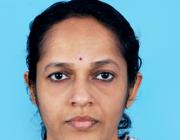|
PROGRAMME: APPLIED ELECTRONICS & INSTRUMENTATION |
DEGREE: BTECH |
|
COURSE: SIGNALS & SYSTEMS |
SEMESTER: 4 CREDITS: 4 |
|
COURSE CODE: AI 010 403 REGULATION: 2012 |
COURSE TYPE: CORE
|
|
COURSE AREA/DOMAIN: ELECTRONICS |
CONTACT HOURS: 2+2 (Tutorial) Hours/Week. |
|
CORRESPONDING LAB COURSE CODE (IF ANY): AI 010 708 |
LAB COURSE NAME: DSP Lab |
SYLLABUS:
|
UNIT |
DETAILS |
HOURS |
|
I |
Classification of signals: Continuous time and Discrete time, Even and Odd , Periodic and Non-periodic , Energy and Power – Basic operations on signals: Operations performed on the dependent variable , operations on the independent variable: Shifting , Scaling – Elementary Discrete time and Continuous time signals: Exponential , Sinusoidal , Step , Impulse , Ramp – Systems: Properties of Systems: Stability, Memory, Causality, Invertibility, Time invariance, Linearity – LTI Systems: Representation of Signals in terms of impulses – Impulse response – Convolution sum and Convolution integral – Cascade and Parallel interconnections – Memory, Invertibility, Causality and Stability of LTI systems – Step response of LTI systems – Systems described by differential and difference equations (solution by conventional methods not required) |
13 |
|
II |
Fourier analysis for continuous time signals and systems: Representation of periodic signals: Continuous Time Fourier Series – convergence of Fourier series – Gibbs phenomenon – Representation of aperiodic signals: Continuous Time Fourier Transform – The Fourier Transform for periodic signals – Properties of Fourier representations – Frequency Response of systems characterized by linear constant coefficient differential equations |
12 |
|
III |
Fourier analysis for discrete time signals and systems: : Representation of periodic signals: Discrete Time Fourier Series – Representation of aperiodic signals: Discrete Time Fourier Transform – The Fourier Transform for periodic signals – Properties of Fourier representations – Frequency Response of systems characterized by linear constant coefficient difference equations |
12 |
|
IV |
Filtering: Frequency domain characteristics of ideal filters – Time domain characteristics of ideal LPF – Non-ideal filters – First and Second order filters described by differential and difference equations – Approximating functions: Butterworth, Chebyshev and elliptic filters (Magnitude response only) – Sampling: The sampling theorem – Reconstruction of a signal from its samples using interpolation – Aliasing |
9 |
|
V |
Bilateral Laplace Transform – ROC – Inverse – Geometric evaluation of the Fourier transform from pole-zero plot – Analysis and characterization of LTI systems using Laplace Transform – The Z Transform – ROC – Inverse – Geometric evaluation of the Fourier Transform from pole-zero plot – Properties of Z transform - Analysis and characterization of LTI systems using Z-Transform |
13 |
|
TOTAL HOURS |
59 |
|
